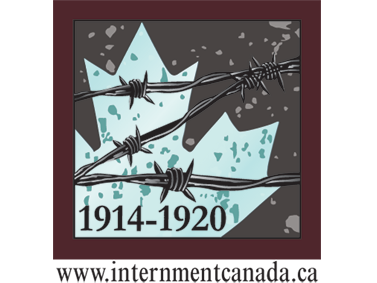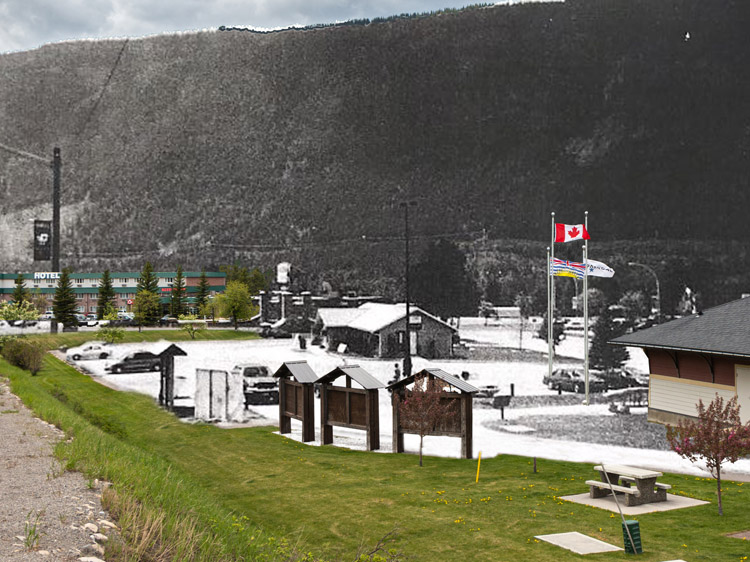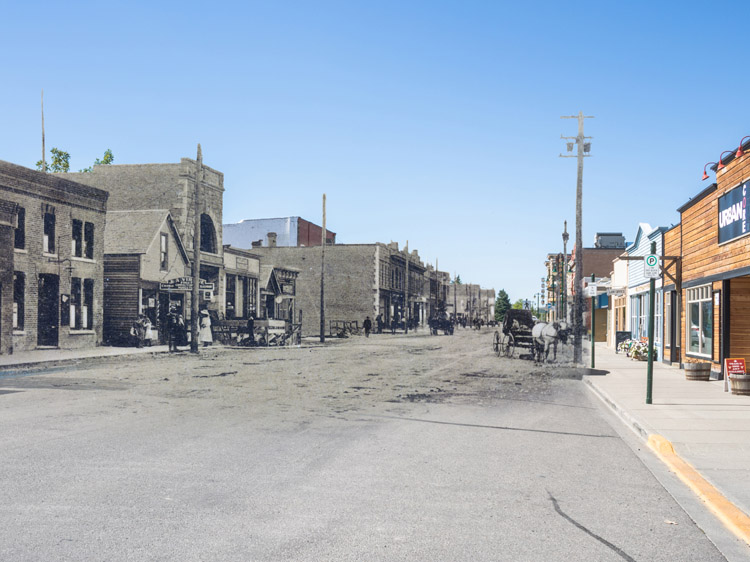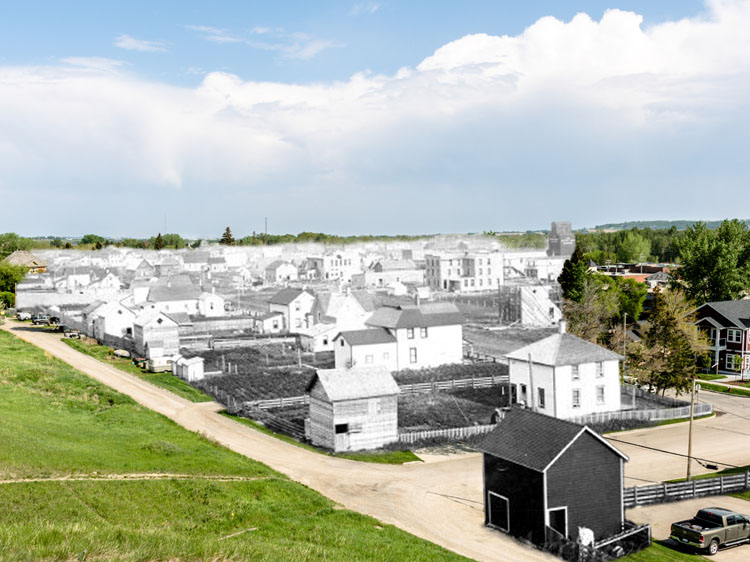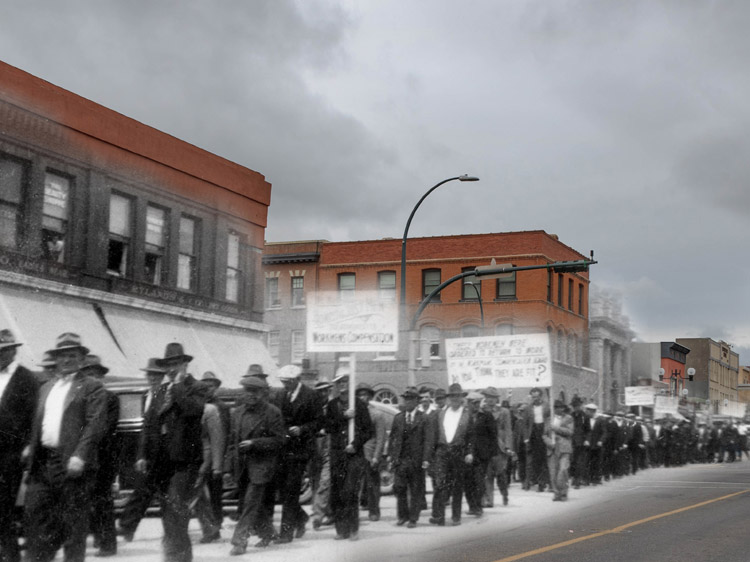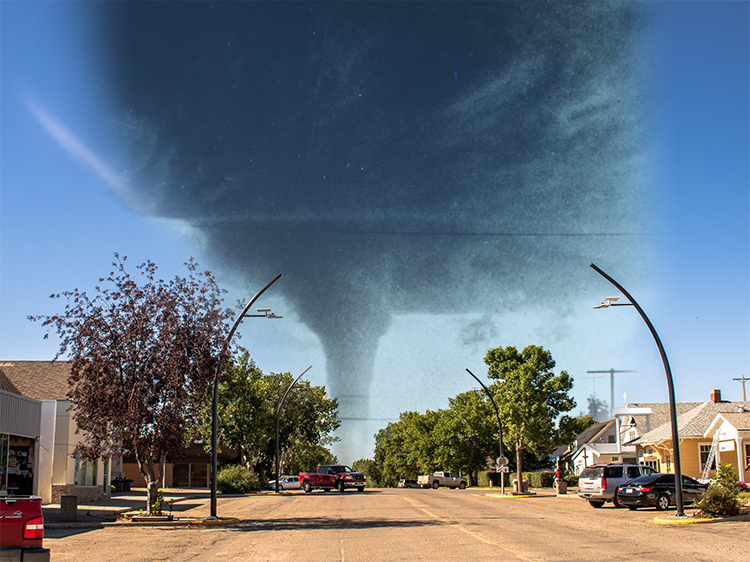The Elk Valley has been inhabited for over 10,000 years by the people of the Ktunaxa Nation. Their traditional territory stretches over 70,000 square kilometres including most of southeastern British Columbia and southwestern Alberta, and extends down into the modern United States, including chunks of Idaho, Washington and Montana.
As European traders, missionaries, ranchers, and miners poured into the region over the course of the 19th Century, the Ktunaxa were largely dispossessed of their land. The discovery of coal in the region led several entrepreneurs, including William Fernie, to successfully advocate for the construction of a railway into the Elk Valley. After the railway was completed in 1897, the town of Fernie became the hub for mining operations in the valley, and it grew rapidly until the outbreak of the First World War.
In the summer of 1915 the growing public pressure led the government to arrest miners that originated from nations Canada was at war with, and interned them at the town's ice rink. In the autumn they were moved to the abandoned townsite of Morrissey just south of Fernie, which was repurposed as an internment camp.
<<
This project has been made possible by a grant from the Endowment Council of the Canadian First World War Internment Recognition Fund.
We respectfully acknowledge that Fernie lies within the ancestral, traditional, and unceded territory of the Ktunaxa First Nation.
Donate Now
If you enjoyed this free content, we ask you to consider making a donation to the Canada-Ukraine Foundation, which is providing urgently needed humanitarian aid to Ukraine.
The Ukrainian people are heroically defending their homeland against a genocidal war of Russian aggression. The humanitarian situation is critical and the needs immense. 100% of all donations made through this link go directly to supporting the people of Ukraine. Recently funded initiatives by the Canada-Ukraine Foundation include demining and removal of unexploded ordnance, and the evacuation of thousands of deaf people from the warzone.
Walking Tours
From the Coal Pit to the Barbed Wire
How Internment Came to Fernie
Unearthing Injustice
Archaeology at Morrissey
Explore
Fernie
Then and Now Photos
Victoria Hotel
Fernie & District Historical Society FMP_00177
1898
The Victoria Hotel in 1898, shortly after the founding of the town. A crowd of people brave the winter temperatures to pose for a photo out front of the hotel. Scaffolding all around the hotel indicates it was still under construction at the time. The hotel would be burned down in one of the several gigantic fires that swept through Fernie in the 1900s.
Postcard of Victoria Avenue
Fernie & District Historical Society FMP_00514-03
ca. 1900s
A postcard view of Fernie's Victoria Avenue, which we today call 2nd Avenue. You can see a great crowd of people on the sidewalks, but surprisingly little vehicle traffic.
Pedestrians on Victoria Ave
Fernie & District Historical Society FMP_00101
ca. 1900s
A large crowd of pedestrians crowd the sidewalks of Victoria Ave. On the right is P. Burns & Co. Meats. The rancher turned businessman Pat Burns was one of the richest men and most successful entrepreneurs in British Columbia at the time.
2nd Ave in Winter
Fernie & District Historical Society FMP_00033
ca. 1900s
Two men stand amid great drifts of snow on Victoria Avenue, or as we know it today, 2nd Avenue.
Fernie Across the Tracks
Fernie & District Historical Society FMP_00166
1908
A view of Fernie just after the great fire of 1908, which shows the only part of the city to have escaped the great conflagration.
Manager's House
Fernie & District Historical Society FMP_00512
1908
This was the home of J.D. Hurd, General Manager of the Crowsnest Pass Coal Co. The home was built in 1901 and constructed in the Queen Anne style, which was popular at the time.
Rebuilding Fernie
Fernie & District Historical Society FMP_00154
1908
Stacks of lumber and building materials in Victoria Ave (today's 2nd Ave.) show the rapid work of rebuilding underway after the devastating fire of 1908.
Temporary CPR Depot
Fernie & District Historical Society FMP_00164
1908
This shows the temporary train depot quickly built just after the great fire of 1908. The station and water tower haven't been painted and have clearly just been constructed. The scaffolding around the water tower indicates that it hasn't been finished yet. These would be replaced shortly after once relief efforts had been completed.
Flooding at the Ice Rink
Fernie & District Historical Society FMP_00435
ca. 1910s
Flooding on the Elk River has left Fernie's Ice Rink half submerged. The ice rink was used as a temporary internment camp in the summer of 1915 for miners from the Elk Valley and Crowsnest Pass who were deemed 'enemy aliens.'
Fernie Station
Fernie & District Historical Society FMP_00306
This was Fernie's Canadian Pacific Railway station. The building has been preserved, but today it is a popular diner.
Fernie Brewing
Fernie & District Historical Society FMP_00109
ca. 1910s
Fernie's Brewery, located on the western side of the Elk River. There is a Fernie Brewing Company that still operates today on the north side of town.
Kootenay Answers!'
Fernie & District Historical Society FMP_00240
1915
A train departs Fernie's station carrying men local men off to fight in France. The banner on the car indicates that they are from the 8th Platoon of B Company of the Kootenay Battalion. Smiling men poke their heads out of the windows, unaware of the horrors that await them in the trenches.
Funeral Procession
Fernie & District Historical Society FMP_00094
1928
A funeral procession proceeds from the Holy Family Catholic Church. It is led by a horsedrawn hearst and a number of men walking alongside, and followed by a long convoy of cars. At right is Fernie's Meat Market.
Municipal Buildings
Fernie & District Historical Society FMP_00557
ca. 1930s
This was once the site of Fernie's Municipal Building. It was demolished in 1972.
The Church Choir
Fernie & District Historical Society FMP_00046
ca. 1940s
The choir of Knox United Church pose for a photo on the church steps.





